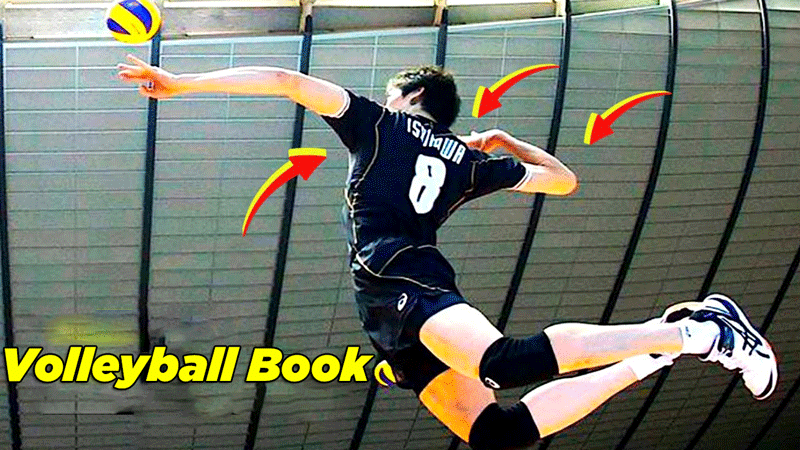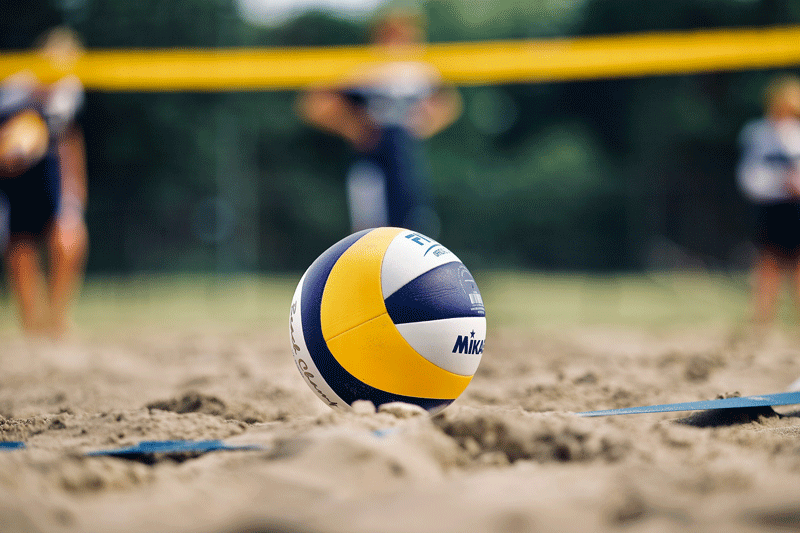5 Simple But Effective Volleyball Outside Hitter Drills
Often, the best volleyball drills are surprisingly simple and need not be overly complicated.
Having devised my top 5 favorite Volleyball Outside Hitter Drills, these are ideal for outside hitters at every skill level.
Being quick and simple to learn, these drills allow athletes to concentrate on refining their technique rather than being concerned about where to go next.
Each drill can be modified to your heart’s content, allowing adjustments for ease, difficulty, or the inclusion of more players.
While most of these drills can be done with just 2 people, a minimum of 3 is needed for some.
These drills also prepare athletes for a variety of in-game situations that may arise while playing the outside hitter position.
This article highlights five simple yet effective volleyball outside hitter drills, emphasizing their adaptability and applicability to various skill levels.

So Let’s Start!
1. Downball Dig Hitting Lines
Known by everyone, this drill is a familiar and recognized exercise.
Essentially, it’s a warm-up hitting lines drill.
Beginning with the outside hitter positioned in position 1, the ball initiates the drill.
Subsequently, the ball is set to the setter in position 2, who executes a downball/roll shot back to position 1.
After delivering the ball to the setter in position 2, it is then set outside for the outside hitter in position 1 to execute hits (3, 4).
The drill primarily emphasizes transition footwork and spike timing as key focus areas.
The practice involves running a variety of different speed attacks.
While executing, the outside hitter should exclusively target the back corners of the court and strive to swing as aggressively as possible.
2. Release Ball Hitting Drill
Simulating a poor pass scenario, this drill involves the setter being compelled to execute a long-distance, high-arcing ‘release’ set to the outside hitter.
In this situation, the ball is likely to be farther off the net than the hitter would prefer, and it will approach at a challenging angle to hit.
Initiated by position 1 from the back/right court zone, the drill involves setting a high release ball to the outside hitter, who is tasked with spiking the ball over the net.
The drill’s key focus areas include:
- The setter’s objective is to place the ball in the optimal hitting window for the outside hitter, replicating a game scenario. If the setter cannot execute a set from that distance, they have the option to toss the ball instead.
- The emphasis for the outside hitter should be on jumping high and mastering timing.
- Additionally, the outside hitter must concentrate on executing high and powerful swings, directing the ball toward the back of the court.
To increase the difficulty level, blockers can be added on the other side of the net during this drill.

3. Pipe Hitting Drill
This drill mirrors the initial downball dig drill, with the only variation being that it now involves hitting from the back/middle zone instead of the left side of the court.
Position 1 initiates the drill by setting to the setter, who subsequently rolls a downball back to position 1. After the dig, position 1 directs the ball to the setter, who sets a pipe for the outside hitter.
The primary focus of this drill is directing shots toward the last 2 feet of the backcourt while intentionally avoiding hitting directly down the middle of the court.
Direct your shots towards the corners or the seams between positions 1, 6, and 5.
4. Block Tooling Drill
This represents another straightforward variation of the initial downball dig drill.
The sole distinction is the presence of 1, 2, or 3 blockers on the other side of the net in this variation of the initial downball dig drill.
Before the outside hitter executes the hit, the blocker should intentionally ‘show early,’ providing a visible target for the outside hitter to aim for.
The outside hitter’s responsibility is to skillfully tool the ball off the block using any available method.
This entails the possibility of hitting the ball off the outside or inside arm, as well as employing tipping or pushing techniques to direct the ball off the block.
Additionally, they have the option to deliberately aim for a high contact point of the hands of the block.
To increase the difficulty level, the drill can be intensified by requiring the blockers to execute proper blocking techniques, emulating in-game conditions.
In this scenario, the blocker’s objective is to execute a stuff block against the outside hitter who, in turn, is attempting to skillfully tool the block.
5. Block Spike Transition Drill: As A Volleyball Outside Hitter Drills

The drill’s objective is to replicate the rapid transition from blocking to hitting that occurs in high-speed in-game situations.
Commencing from the 1 spot, the outside hitter executes a block jump at the net, swiftly retreating backward to the 4 spot.
Positioned in the 2 spot, the setter is tasked with either tossing or setting a ball to a high point within the hitting window of the outside hitter.
The set doesn’t need to be flawless, as the aim is to recreate a scrappy release ball situation.
Upon landing from the block, the outside hitter must prioritize swiftly sprinting back into position as part of the drill’s focus.
Subsequently, they must swing at the ball, irrespective of whether they are fully prepared for the hit, as part of the drill’s requirements.
To elevate the difficulty level, the drill can be intensified by incorporating a blocker on the other side of the net or by setting the ball before the hitter is fully positioned.
